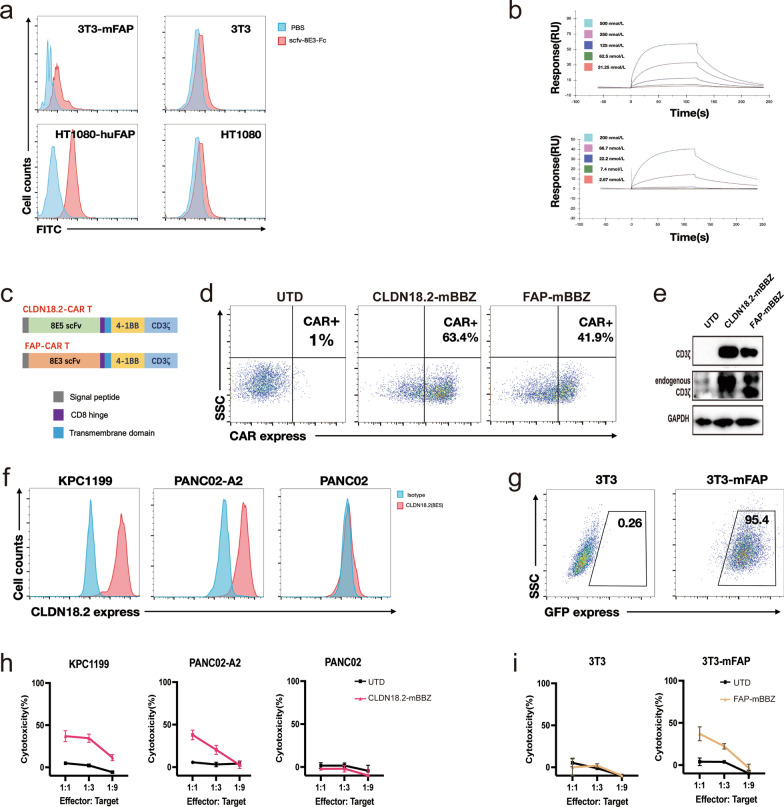Fig. 3.
Generation of FAP-targeted CAR-T cells and CLDN18.2-targeted CAR-T cells. a Binding specificity of the anti-FAP antibody to mFAP-transfected 3T3 or huFAP-transfected HT-1080. b Affinity measurements of anti-FAP antibody binding to FAP through BiacoreSurface Plasmon resonance (GE Healthcare). The upper shows its binding to mu-FAP and, the lower shows its binding to hu-FAP. c The construction of 8E3-mBBZ and 8E5-mBBZ CAR-T cells. This construct includes an extracellular antigen recognition region (8E5 targeting CLDN18.2 and 8E3 targeting FAP), a hinge, a transmembrane domain, an intracellular region of mouse 41-BB costimulatory molecules, and a mouse CD3-ζ chain. d The transduction efficiency of FAP-mBBZ and CLDN18.2-BBZ CAR-T CAR on splenic T cells derived from C57BL/6 was determined by flow cytometry. UTD cells served as negative controls. e Western blot of CD3-ζ in CAR-T. Glyceraldehyde 3-phosphate dehydrogenase (GAPDH) served as a loading control. f The expression of CLDN18.2 on KPC1199, PANC02, and PANC02-A2. Cells incubated with a mouse anti-mouse IgG antibody as a negative control. g The establishment of mFAP NIH 3T3 mouse fibroblast cells. NIH 3T3 was transduced by pWPT-GFP-mFAP lentivirus and further sorted by flow cytometry. h-i CAR-T cells were incubated with tumor or fibroblast cells at three effector: target (E: T) ratios for 18 h. Cell lysis was tested using a standard nonradioactive cytotoxicity assay. h Cytotoxic activities of CLDN18.2-mBBZ CAR-T cells on CLDN18.2-positive or CLDN18.2-negative tumor cells. i Cytotoxic activities of FAP-mBBZ CAR-T cells on FAP-positive or FAP-negative fibroblast cells

